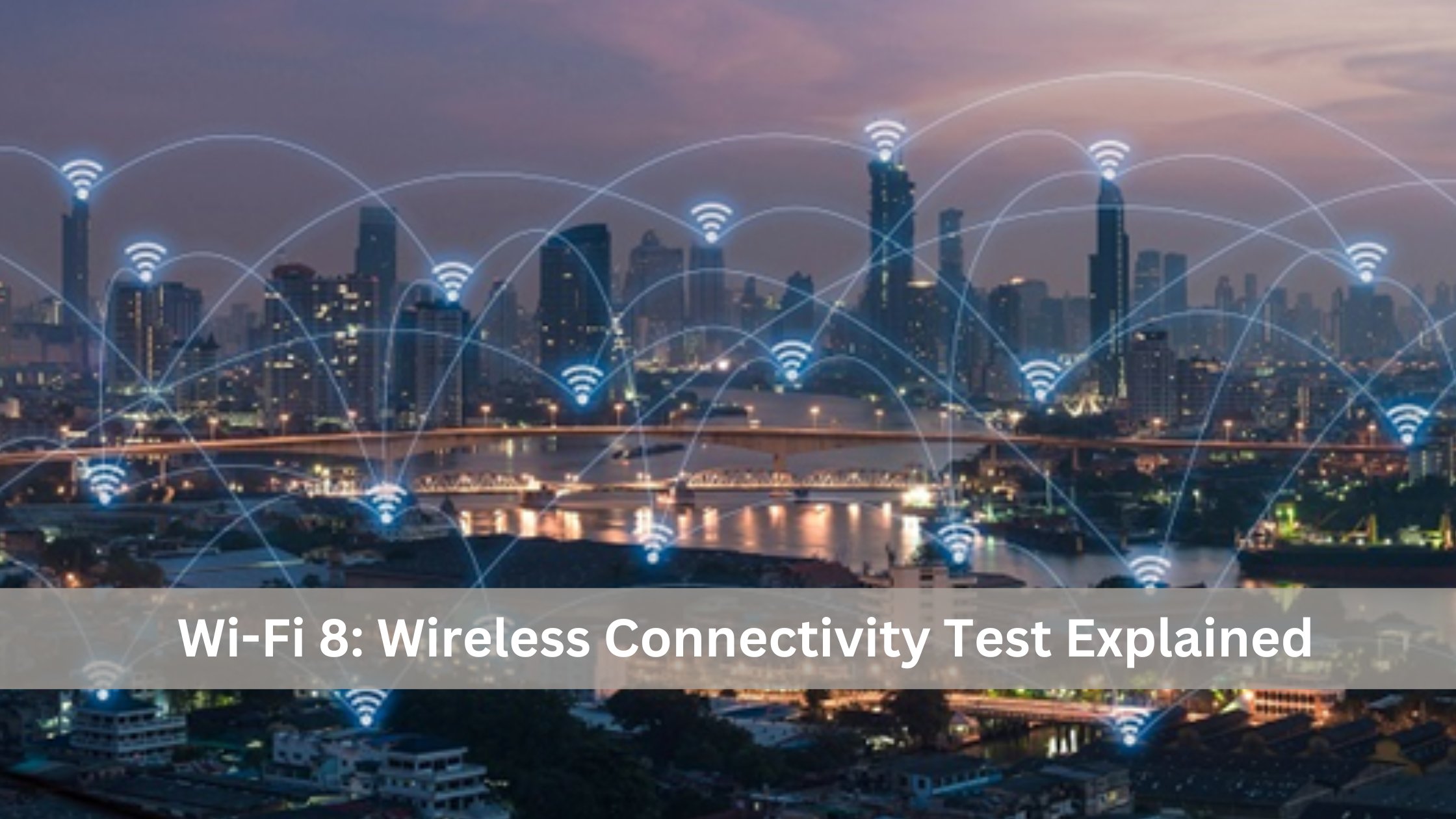Are you having trouble understanding the upcoming Wi-Fi 8 and how to test wireless connectivity? You’re not alone. Wi-Fi 8, also known as 802.11ax, is expected to revolutionize our networking experiences with increased speeds and capabilities.
This article will demystify these complex terms and guide you into the process of conducting wireless connectivity tests for optimal network performance. Let’s dive right in. Read on to learn more about Wi-Fi standards and tests!
Understanding Wi-Fi Standards
Wi-Fi standards include several rules and specifications that define how wireless signals operate, ensuring compatibility and efficient communication between devices.
Core WLAN standards (Wi-Fi 5, Wi-Fi 6, Wi-Fi 7)
Let’s dive straight into the heart of core WLAN standards which form the foundation for modern wireless communication. They are:
- Wi-Fi 5, also known as 802.11ac, brought enormous improvements in data rates and channel width over its predecessor. Multi-user MIMO technology can simultaneously serve multiple devices, making it perfect for densely populated areas or households with multiple internet users.
- Wi-Fi 6 is a newer version that uses both frequency bands (2.4 GHz and 5 GHz) and introduces advanced technologies to improve efficiency, capacity, and performance in environments with several connected devices.
- Wi-Fi 7 is not officially out yet, but it promises even higher data rates, improved efficiency, and better performance than Wi-Fi 6.
Wi-Fi standards under development (802.11az, 802.11bd, 802.11bf, 802.11bh, 802.11bi)
Technological advancements are fueling novel Wi-Fi standards under development. These impending Wi-Fi standards, designed to amplify wireless communication and networking, include:
- 802.11az: This standard will offer location-based services with more precision indoors.
- 802.11bd: Also known as Next Generation Vehicular (NGV), this standard focuses on improving the reliability of data transmission.
- 802.11bf: Tactile internet applications will be made possible with this standard, as it focuses on enabling ultra-low latency communication.
- 802.11bh: This global standard aims for network enhancements using the TV White Space spectrum.
- 802.11bi: The Internet of Things (IoT) will get an enormous boost as this standard aims for lower consumption, extended device battery life, and improved connectivity.
Niche Wi-Fi standards (802.11ah, 802.11ad, 802.11ay)
Diving into the world of Wi-Fi, you encounter niche standards like 802.11ah, 802.11ad, and 802.11ay. These technological advancements push the boundaries of wireless connectivity.
The standard 802.11ah operates in frequency bands below one gigahertz to offer extended-range Wi-Fi connections. This standard ensures quality data transfer rates even at greater distances.
On the other hand, there’s 802.11ad, which provides short-range, high-speed wireless communication. It can achieve a maximum throughput of up to 7 Gbps! Talk about speed improvements!
But it doesn’t stop there, with the introduction of 802.11ay. An update to its predecessor (802.11ad), it continues to operate on the same frequency band for consistency. This new kid on the block supports a whopping maximum throughput of at least 20 Gbps within a 60GHz frequency.
Such capacity gives rise to countless applications, including high-definition video streaming and virtual reality gaming.
Historic Wi-Fi standards (802.11n, 802.11g, 802.11a, 802.11b, 802.11-1997)
The history of Wi-Fi standards includes several notable versions:
- 802.11-1997, the first Wi-Fi standard, was introduced in 1997.
- 802.11b, widely accepted as the first wireless networking standard.
- 802.11a and 802.11g, subsequent Wi-Fi standards following 802.11b.
- 802.11n, approved in 2009, specified MIMO technology and allowed usage in two frequencies: 2.4GHz and 5GHz.
What is Wi-Fi 8?
Wi-Fi 8, also known as 802.11be, is the latest and fastest Wi-Fi standard that offers significant improvements in speed, capacity, and reliability compared to its predecessors. With enhanced features such as increased data rates and improved efficiency, Wi-Fi 8 is set to revolutionize wireless connectivity.
Curious to know more about these advancements? Keep reading!
Overview of Wi-Fi 8 (802.11be)
Wi-Fi 8, also known as 802.11be, is the latest Wi-Fi standard currently being developed. It aims to provide faster speeds and lower latency than previous Wi-Fi standards.
Operating in the 2.4GHz, 5GHz, and 6GHz frequency bands, Wi-Fi 8 supports Multi-User MIMO (MU-MIMO) technology, allowing multiple devices to transmit and receive data simultaneously.
It also incorporates Orthogonal Frequency Division Multiple Access (OFDMA). OFDMA enhances spectral efficiency and improves communication between devices. With its focus on speed, efficiency, and connectivity, Wi-Fi 8 will likely revolutionize wireless networking and enhance internet connectivity for a wide range of devices.
Features and Improvements of Wi-Fi 8
Wi-Fi 8, also known as 802.11ax, comes with a host of exciting features and improvements. One notable enhancement is its ability to handle crowded environments with ease. This means that even in places like offices, schools, and public spaces where multiple devices are connected simultaneously, Wi-Fi 8 ensures network performance remains optimal.
With increased capacity to accommodate more devices than ever, Wi-Fi 8 truly caters to our increasingly connected lifestyles.
But it doesn’t stop there. Wi-Fi 8 introduces advanced technologies such as MU-MIMO (Multi-User Multiple Input Multiple Output) and OFDMA (Orthogonal Frequency Division Multiple Access).
These technologies enable more efficient data transfer and better utilization of network resources. As a result, users can experience significantly faster download and upload speeds compared to previous Wi-Fi standards.
Not only does Wi-Fi 8 offer improved speed and capacity, but it also brings power efficiency into the mix. Devices connected to Wi-Fi networks powered by this latest standard can conserve battery life effectively.
Wireless Connectivity Test
The wireless connectivity test is essential for ensuring a stable and reliable connection. By using various tools and methods, such as testing Bluetooth, ZigBee, and Wi-Fi connections, you can troubleshoot any network issues that may arise.
Discover the importance of this test and how it can improve your wireless experience – read more now!
Importance of wireless connectivity test
Wireless connectivity tests play a crucial role in ensuring the smooth operation of wireless networks. These tests are essential for validating and verifying the implementation of wireless technologies, such as Wi-Fi, Bluetooth, and ZigBee.
By conducting these tests, organizations can ensure optimal performance of their Wi-Fi networks and the applications utilized by users while connected to the network. Moreover, wireless technology has proven cost-effective in healthcare settings by reducing the need for physical infrastructure and enabling remote access to patient information.
In addition, troubleshooting wireless network connection problems can be simplified through proper testing methods and steps, leading to faster resolution of issues. So, whether you’re optimizing Wi-Fi performance or diagnosing signal broadcasting problems in range extenders, performing a thorough wireless connectivity test is vital for maintaining a reliable and efficient wireless network.
Tools and methods for wireless connectivity test
To ensure your wireless network is functioning properly, you’ll want to conduct regular connectivity tests. Here are some tools and methods you can use:
- Wireless Diagnostics: If you’re using a Mac, the Wireless Diagnostics feature can help resolve Wi-Fi issues and provide best practices for optimizing your network.
- Network Test Reports: Some devices, like the HP Deskjet 3050A J611 series, offer a wireless network test report that allows you to print diagnostics and identify connectivity issues.
- Specific Testing Strategies: Companies like TI employ strategies to test SimpleLink Wi-Fi devices and WiLink 8 combos, ensuring that their products meet quality standards.
- Advanced Techniques: Troubleshooting Wi-Fi connections may require a deeper understanding of the flow of Wi-Fi signals and advanced techniques to identify and resolve any issues.
Testing Bluetooth, ZigBee, and Wi-Fi connections
- Test the connectivity of Bluetooth, ZigBee, and Wi-Fi connections.
- Ensure that these wireless communication technologies are functioning properly.
- Use tools and methods specifically designed for testing Bluetooth, ZigBee, and Wi-Fi connections.
- Check the strength and stability of the connections to ensure a reliable wireless experience.
- Verify that devices can seamlessly connect and communicate over Bluetooth, ZigBee, and Wi-Fi networks.
- Test the range of these connections to determine their coverage area.
- Identify any potential interference or signal issues that may affect the performance of these wireless technologies.
- Validate the compatibility between different devices using Bluetooth, ZigBee, or Wi-Fi connections.
- Conduct thorough testing to ensure compliance with industry standards for Bluetooth, ZigBee, and Wi-Fi technologies.
- Troubleshoot any connectivity problems encountered during the testing process.
- Provide accurate and reliable certification for devices that pass all required tests.
Conclusion
In conclusion, Wi-Fi 8 is a cutting-edge wireless network protocol that promises faster speeds and improved performance. The wireless connectivity test plays a crucial role in evaluating the network’s reliability and identifying areas for improvement.
With its backward compatibility and ability to handle multiple devices, Wi-Fi 8 is set to revolutionize wireless communication and provide seamless internet connectivity for various environments.

The Search Engine Cage team is on a mission to educate entrepreneurs. We make things easier for the small business owner, by writing articles that help them to understand SEO and Digital Marketing.







